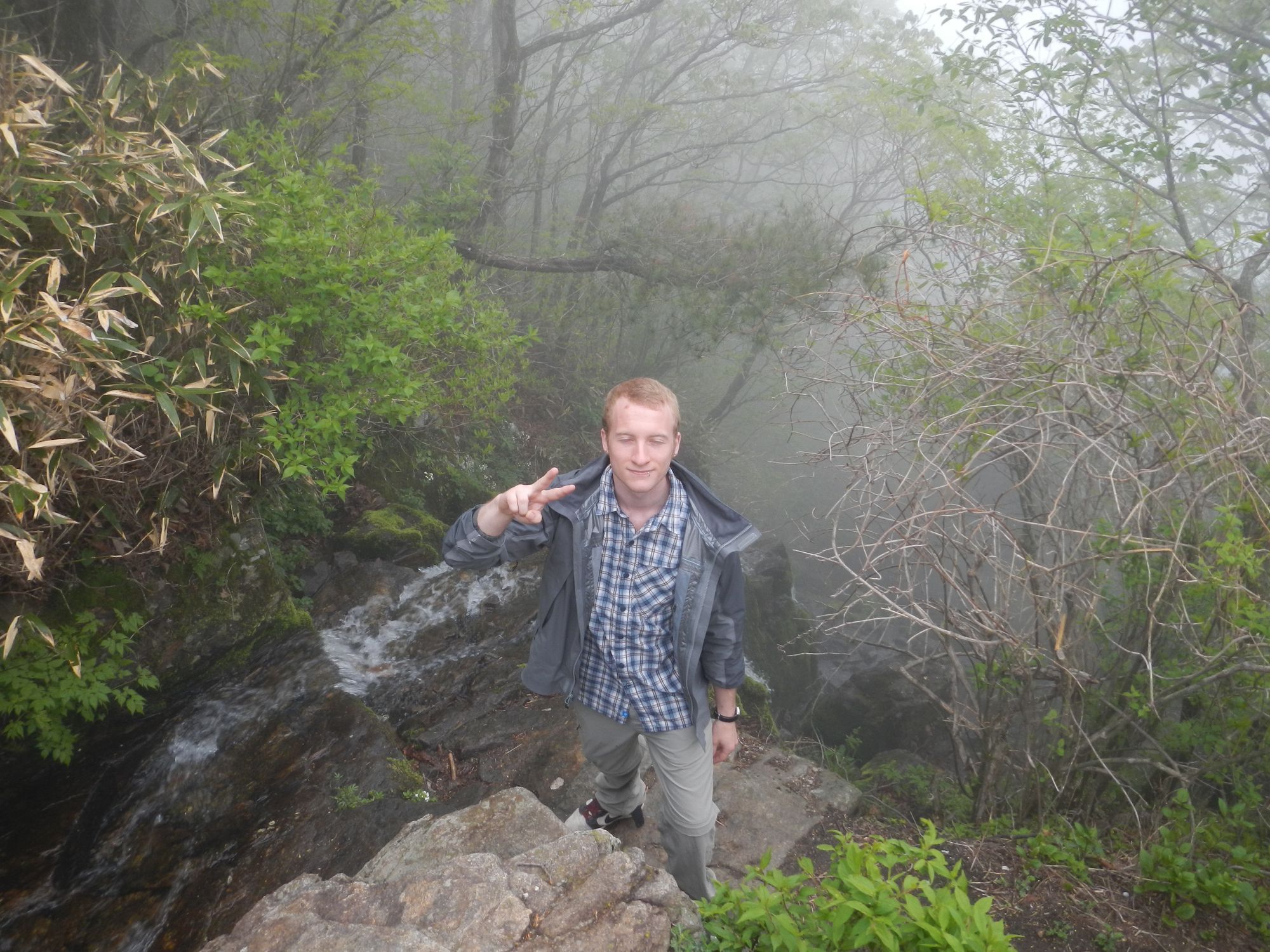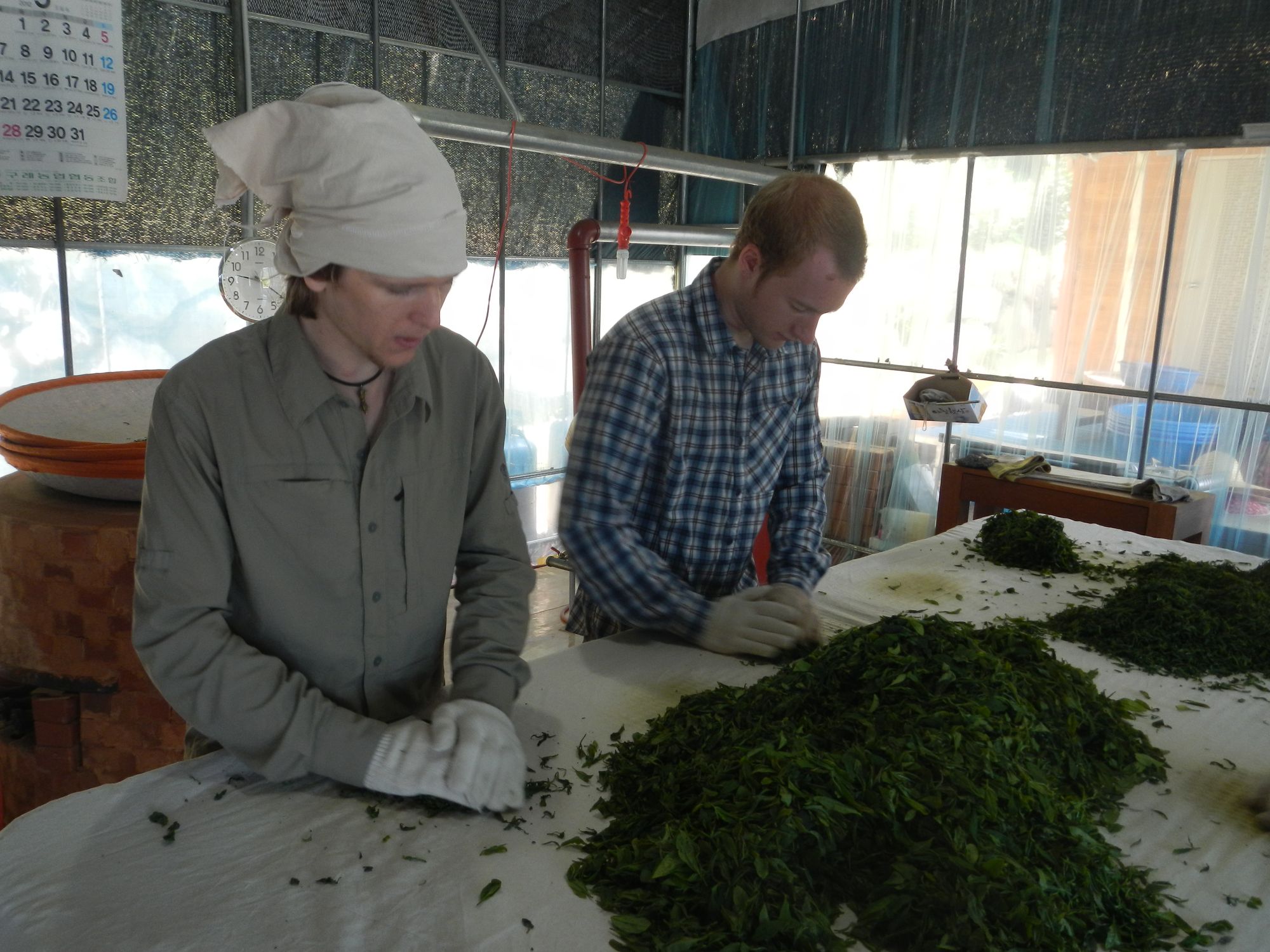Korea 2012 Guest Post – Pat Penny 3
Guest Post by Pat Penny:
We arrived in Gurye just in time for dinner, we were met by the familiar face off Mr. Hong Kyong-Hee. Mr. Hong was one of the guests that flew in to Penn state to present on Korean tea ceremony and tea production methods. After a wonderful dinner we took a ride over to Mr. Hongs house where we drank his first picking nokcha. Before this tea I had never had a tea so fresh and recently produced. It would be an injustice to it’s magnificent flavor, active mouth feel and sublime qi to say this was anything but the best nokcha I’ve ever had. We all awaited the next day anxiously as it would be our first day picking tea.
We awoke at 6 to pick tea but it had unfortunately rained over night so we decided to spend our morning trekking through some if the Jiri Mountain range. We hiked to the peak of the 800 meter high mount nogodan. We walked through clouds, quite literally, making our way past beautiful streams and breathtaking rock formations. As we reached the top the clouds started to clear and we were rewarded with a beautiful view of the mountain range from the peak of one of it’s highest mountains.

Around 1 in the afternoon Mr. Hong deemed the conditions fair enough to pick tea so we dawned our picking attire and got to work. We first picked tea in Mr. Hong’s fields surrounding his house. There were about 50 or so semi wild tea bushes. We were picking alongside 5 ‘helme’ (the term Mr. Hong used for grandmothers from the village) and after about 4 hours we picked most of buds from the field. Picking was tough work: being out in the sun, trudging through all forms of plant life to get to certain bushes, as well as fighting of some of the strangest bugs i’ve ever seen were only some parts of our picking experience. Picking tea although hard can also be relaxing, after picking for a while you fall into a sort of picking zen. A deep meditative calmness befalls you as you work your way from bush to bush scouring for leaf and bud combos. Slowly your eyes picked out buds quicker than they did before and by the end of the harvest you realize how much your picking skills have increased. However, we were always humbled when it came time to dump our pouches of tea revealing a measly kilo or so between the five of us. The helme would laugh and then dump about a kilogram of leaves each, a testament to there many years of work.
After letting the leaves sit out to wither in the shade of Mr. Hong’s workshop for a few hours we started the processing cycle. We started with the Sha Qing in an approximately 275 degrees wok. We moved the leaves around very quickly in a circular pushing motion never allowing any leaf to sit around for more then a second or two. After a minute or two we removed the leaves and put them on a table with a fan blowing on them and we started to separate the piles of leaves to make sure they cooled quickly and evenly. We then grabbed decent size piles of leaves and balled them up. From here we rolled the leaves, it wasn’t a gentle job either. We rolled hard for couple of minutes in a long line. We then separated the piles again and repeated the wok drying,cooling and separating stages eight more times until we were left with a pile of leaves about a fourth of the weight of our original materials. The following wok processing stages were much cooler then the first, around 140 degrees. The processing was also very work intensive but going through the picking and processing stages really helped me get a more solidified idea of all the steps that go into making tea, the order in which it’s carried out, and many of the minor details that go into making a tea that you never come across in readings.

The next day we picked tea from 7-12, had a nice lunch break, and then picked again from 1-4. This tea was destined to become padio cha. The tea was left out to wither til 8 the next morning. When we came into the workshop the next morning we pulled up our sleeves and got to rolling. We rolled the tea for about an hour and a half, which was a killer forearm workout, we all rolled a football sized wad of tea leaves at a time for about five minutes at a time and then passed it on to the next person. After rolling the tea was separated and packed into an ongi were it was left in an ondol heated room, covered with a blanket, and left for a day. The next day the tea was spread out on a mat in the ondol heated room and was then left out for another 2-3 days. Tea is most certainly the worlds most labor intensive luxury good.

Our time with Mr. Hong eventually came to end, a few days is all too short to spend with him. Brewing the tea we made is sure to bring back fond memories of picking, processing, and drinking tea with Mr. Hong. We all eagerly await the next chance we get to see Mr. Hong, and perhaps the next time we get to make tea with him.